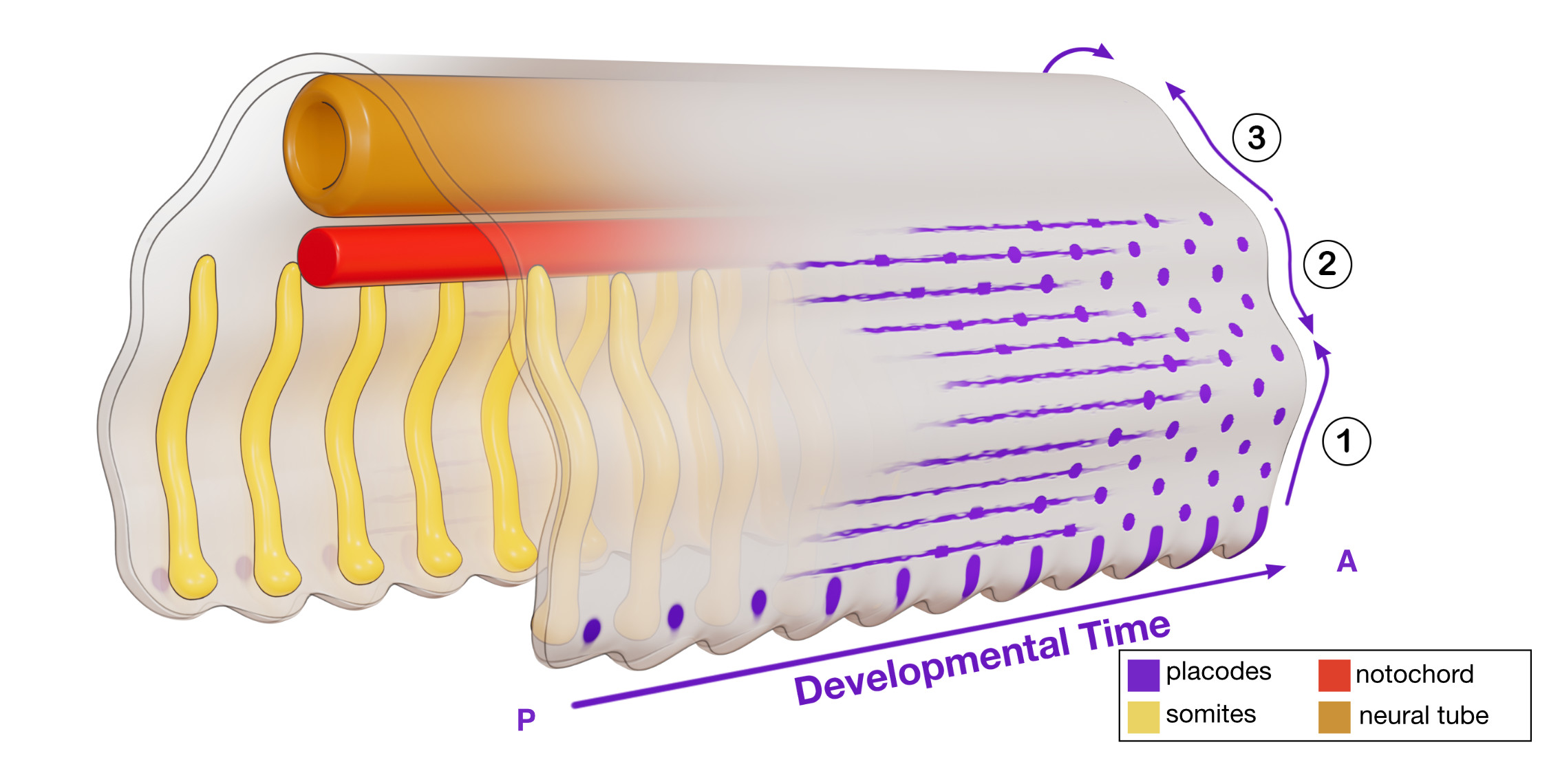Previous work from our laboratory has demonstrated that, similarly to hairs and feathers, reptilian scales also develop from placodes, which are small localised thickenings of the skin. The spatial distribution of these placodes on the embryonic skin is established through a self-organisational Turing process that involves genes of the Ectodysplasin A (EDA) pathway. In our new paper, published today in the journal Science Advances, we reveal the world's first transgenic snakes, thereby showing that internal anatomical structures guide the position of their scales. We suggest this process ensures the proper alignment of snake scales with the underlying ribs and muscles to optimise the animal’s locomotion.
Somites guide the development of ventral scales in the snake
Snakes exhibit a strikingly ordered pattern of scales: on the back and flanks, the scales form a near-perfect hexagonal pattern (Figure 1), whereas the ventral scales align as a single row along the animal’s body (Figure 2). In a paper published today in Science Advances, Athanasia Tzika demonstrates that ventral scales form first and their development is guided by the somites, which are the sequential elements that give rise to the vertebrae, the ribs and the muscles. She then shows that defects in the formation of ventral scales are positioned near skeletal defects, confirming the developmental link between somites and ventral scales.

Figure 1 |

Figure 2 |
Ventral scales guide the self-organised patterning of dorso-lateral scales
Once the pattern of the ventral scales is established, rows of lateral placodes start to form in a wave traveling towards the back (arrow number 1 in Figure 3). The first row of dorsolateral placodes is positioned in anti-phase with the ventral placodes. Similarly, a row of dorsal scales (likely also guided by somitic structures) forms and initiates a wave of self-organised placode development, travelling towards the belly (arrow number 2 in Figure 3). The two waves meet laterally to form a near-perfect hexagonal pattern. Any defects in their alignment occur where the two waves meet.

Figure 3 |
Computer simulations confirm our biological experiments
We also run numerical simulations based on a Turing reaction–diffusion system to investigate the dynamics described above. These analyses indicate that both the presence of developmental waves, and their initial pre-patterning by somitic structures, are required to reproduce our findings on real snakes: a near-perfect ordered pattern of scales.
The first genetically-modified snakes
Athanasia Tzika and her team also unambiguously confirm that ventral scales form independently of a functional canonical EDA pathway, by producing the world’s first genetically-modified corn snakes (Figure 4) using CRISPR-Cas9. These mutant snakes with a disrupted EDARADD gene (one member of the EDA pathway) lack dorso-lateral scales, but exhibit ventral scales. These results show that (i) ventral scales form independently of a functional canonical EDA pathway, and (ii) their patterning is not self-organised but defined by positional information originating from underlying somitic tissues.
 Figure 4 |
Additional information is provided in the original article
Somitic positional information guides self- organized patterning of snake scales
Tzika A. C., Ullate-Agote A., Zakany S., Kummrow M. & M. C. Milinkovitch
Science Advances 2023
Summary Movie
Contacts
| Dr. Athanasia Tzika
Email: athanasia.tzika@unige.ch |